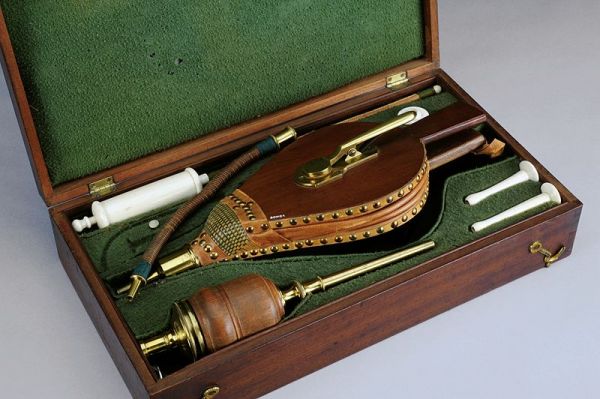I am so very, very, very, thankful that we've progressed past this point:
According to Eighteenth Century British medicine, that it was possible to revive a person who had stopped breathing by blowing tobacco smoke up his rectum. Emergency enema kits like these were the defibrillators of the day: essential lifesaving tools designed by medical professionals. Ella Morton of Atlas Obscura writes:I'm surprised this hasn't been on an episode of House, MD.
Cardiopulmonary resuscitation, or CPR, was still centuries away from common usage. Instead of pumping the chest or giving mouth-to-mouth to a drowning victim—a practice that prominent British doctor William Hunter called "vulgar" in 1776—rescuers employed a variety of other dubious methods when attempting to revive those with waterlogged lungs. Rubbing the skin, inflating the lungs via a tube inserted into the trachea, and bloodletting were among the approaches. The most creative technique, however, was rectal tobacco insufflation—piping smoke into the unconscious person’s intestines via a bellows inserted in the anus.Occasionally the process worked. The medical journal The Lancet repeats a story from 1746:
A man's wife was pulled from the water apparently dead. Amid much conflicting advice, a passing sailor proffered his pipe and instructed the husband to insert the stem into his wife's rectum, cover the bowl with a piece of perforated paper, and ‘blow hard.’ Miraculously, the woman revived.

